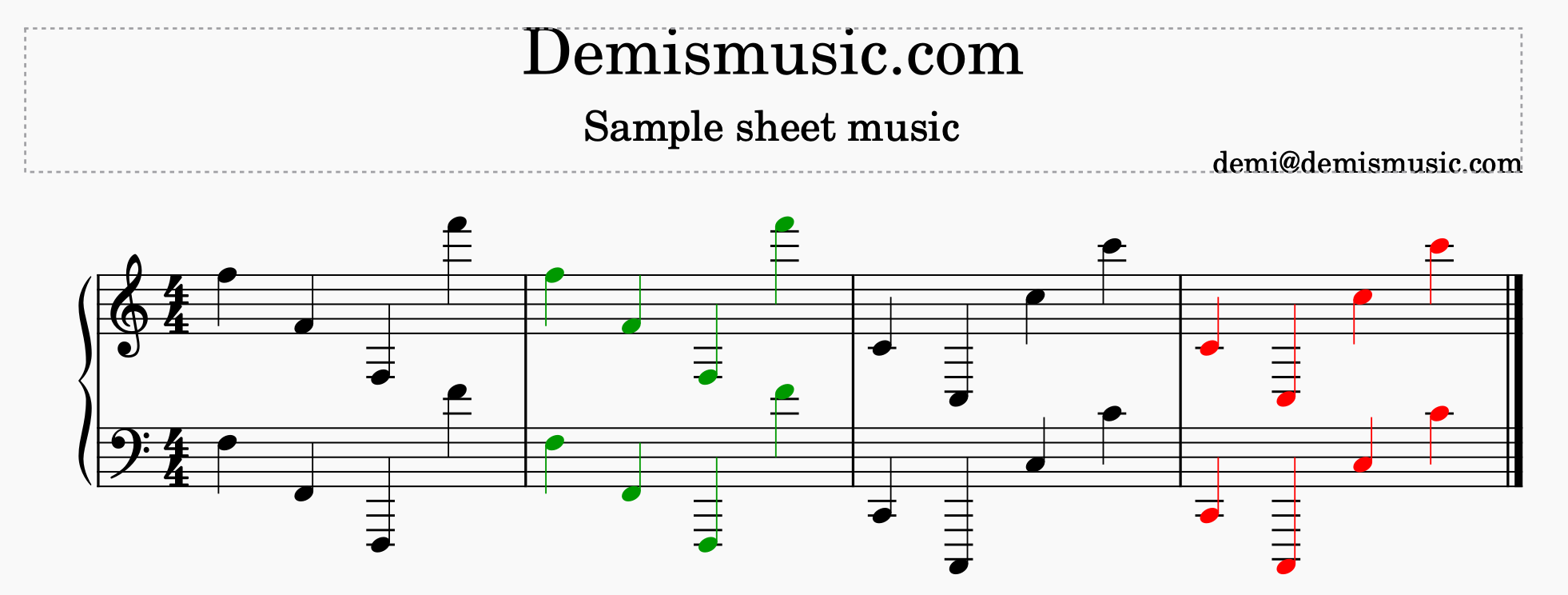
Demi's Music
How it all started
Though a late starter in the piano journey, I was extremely excited to start learning piano. But my excitement was greatly dampened by the considerable difficulty I encountered while trying to read sheet music. I, too, was taught the traditional “FACE” and “ACE Garage” techniques to read sheet music. But was it really that simple?
Struggling, I tried to devise novel ways to remember the musical notes so I can play fluently. I tried to write note names on each note and even tried to remember fingering for each and every note in the sheet music! All that made it harder for me to fully engage with the music and ultimately took away the joy I had anticipated experiencing.
…And one day, I realised, the reason reading sheet music is so difficult is because the way a particular note is written changes not just from one octave to another but also between treble clef and bass clef. Take for example, the note F4 (F in the 4th octave) can be written as the first note in between ledger lines on the treble clef and the in between line note when you draw two imaginary ledger lines on top of the bass clef. Now, that’s complicated!
So, my mathematical mind calculated that there are ‘n’ number of ways to write one F note where
n = number of clefs * number of octaves
i.e. 2 * 8 = 16 ways to write an F note and 112 ways to write all seven notes!
Even with the 8va techniques it will be over 50 notes to remember!
Making sheet music easy
I looked up the all-knowing internet to find if people have already solved this conundrum. Even though I didn't find great solutions, it was consoling to discover the majority of people thought reading sheet music was challenging. Unfortunately though the community at large seemed to have accepted the traditional black and white sheet music as the de facto standard. At most, the children’s music books had colours in them but the sheet music in those books remains predominantly black and white.
As an evolutionary species, humankind progressed from black and white to colours almost as a symbol of evolution. From our black and white television sets we moved to coloured television, from black and white computer monitors we moved to beautiful plasma screens, from black and white mobile phones we moved to today’s multi-functional, multi-coloured mobile devices. So, why not sheet music?
Using colours to identify notes in sheet music would make it so much easier to read, not only to children but also to adults. Of all the techniques I used to make sheet music easy to read, I found adding colours was the best. It not only enhanced the look of the sheet music but also kept it usable in a traditional sense. The advancement of modern display and printing technologies meant coloured sheet music could be displayed and printed in very high quality, which makes it a viable option for making sheet music easy to read.
Shown below are several F and C notes, first written traditionally and then using colours.

All that was needed now were some human guinea pigs. I asked my family, friends, friends of friends, etc. to give my coloured sheet music a go. EVERYONE said they found coloured sheet music easier to read than the traditional one and predictably so. Elated and overjoyed, I wanted to take this to the world!
Computer Programmer at work
Having decided to use colours in my sheet music, the biggest challenge was to quickly colour my favourite pieces of piano music to experience the joy of playing them. Some of the music writing tools like Musescore already support colouring individual notes but it was a slow and tedious endeavour to select each note, decipher it and colour it accordingly and even slower to make corrections afterwards.
This stirred the computer programmer inside me to create a program that would read the notes inside the sheet music, decipher them and colour them as per my preferred palette. Well, how did I come up with a preferred palette, you say? I experimented with different colour groups, giving specific consideration to which combinations will be easier to read as triads. Here’s a snippet from my program which shows the colour selection.
// Default scheme
C("#FF0000"), D("#FF8000"), E("#000000"), F("#009900"), G("#999900"), A("#0000FF"), B("#8C008C");
![]()
Each and every coloured sheet music listed on demismusic.com is coloured by my computer program. All of them bear either a Public Domain or Creative Commons 4.0 license and a license file is included as necessary so you can have complete peace of mind buying these musical pieces.
Conclusion
That is how Demismusic was born. I am thrilled to see you make use of my coloured sheet music in your instrumental journey and hope you spread the word of mouth among your friends and fellow music lovers. If you have any special requests for sheet music, please reach out to me, Charu Bopardikar at demi@demismusic.com.
Thank you!
